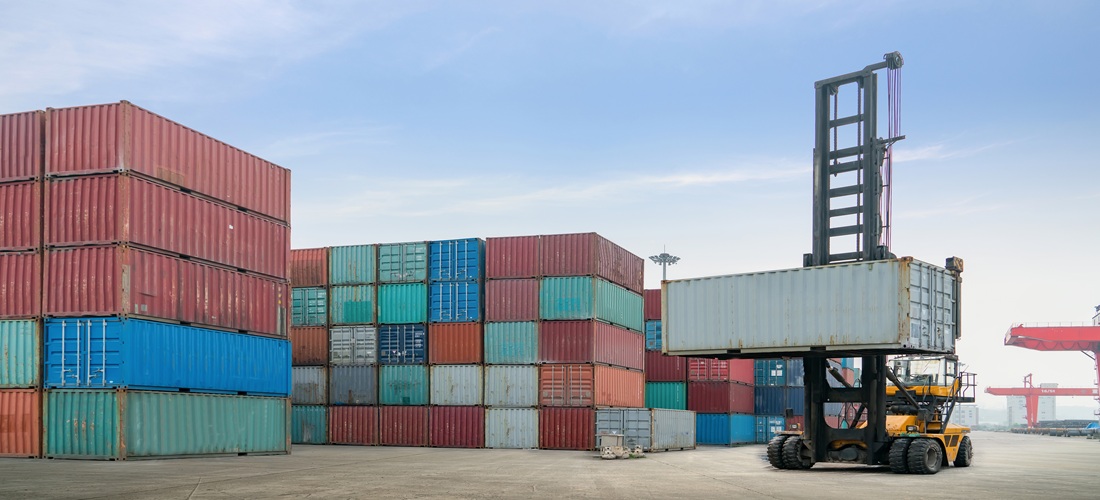
Port of Santos faces another year of capacity strain for containers
Jan, 15, 2025 Posted by Denise VileraWeek 202503
The Port of Santos in São Paulo state, Brazil, faces another challenging year of container capacity strain following severe congestion in 2024. While slight improvements are expected, analysts and businesses warn that significant capacity pressures will persist throughout 2025. Last year, prolonged queues and full-capacity operations tested the patience of terminal users, driven by several compounding factors.
One major contributor to the bottleneck was an operational setback at Brasil Terminal Portuário (BTP), one of Santos’ three primary container terminals. After an accident in January, BTP operated with one fewer berth for the year’s first half. Concurrently, other ports in Brazil faced disruptions: Portonave in Santa Catarina underwent renovations, and operations in Itajaí were halted due to contract disputes. These challenges unfolded amid robust demand, exacerbating the strain on Santos.
According to Datamar data, these are the container terminals that ranked the highest in throughput. It is important to note that the information consulted considers only long-haul operations, not transhipments, cabotage, and other types of cargo handling procedures.
Port of Santos Container Terminals | 2024 | TEUs
Source: DataLiner (click here to request a demo)
Looking ahead, some improvements are on the horizon. BTP has resumed operations and invested in productivity upgrades, while Santos Brasil and DP World have launched expansion projects, though their completion is slated for 2026. Despite these efforts, experts caution that the imbalance between demand and terminal capacity will remain unresolved in the short term.
“We won’t see significant improvements in operations or service levels in 2025. There’s still an imbalance between demand and terminal capacity,” said Casemiro Tércio Carvalho, a partner at 4 Infra. “Some investments in Santos will boost productivity, but it’s uncertain whether they’ll outpace organic cargo growth.”
Marcos Pinto, a partner at A&M Infra, echoed these concerns, emphasizing the lack of a short-term game-changer. “While Santos Brasil and DP World can expand, and BTP is adding equipment, we’ll still see part of Santos’ volume being diverted to ports in Rio de Janeiro, Santa Catarina, and Paranaguá,” Pinto explained.
One of the government’s key strategies to address the capacity crunch is the auction for a new terminal, STS 10, under review by Brazil’s Federal Court of Accounts (TCU). According to Anderson Pomini, president of the Santos Port Authority (APS), the auction is expected by mid-2025. However, the new terminal will unlikely significantly impact capacity until 2030 or later. “If the auction happens at the end of 2025, the concession agreement would be signed by mid-2026. Environmental licensing could take two years, followed by two and a half to three years of construction,” explained Leonardo Levy, head of investments for the Americas at APM Terminals.
Meanwhile, APS is advancing plans to expand Santos Brasil’s terminal by incorporating land occupied by informal settlements. “The densification project is well advanced,” Pomini said, adding that efforts to boost the port’s capacity resumed after removing it from the federal privatization program in 2024. “Last year, we restructured the port’s operations and developed an investment plan.”
Operational challenges persist beyond capacity constraints. Logistical delays in 2024 were exacerbated by global shipping schedule disruptions, according to Fabio Siccherino, president of DP World in Brazil. “Capacity is nearing its limit, and shipping services to Santos are arriving significantly behind schedule. On average, more than 60% of voyages arrive outside their designated berthing windows, disrupting the entire system, lowering productivity, and frustrating customers,” Siccherino said.
Global factors, including geopolitical tensions that briefly closed the Suez Canal to large vessels, have complicated operations, contributing to congestion and rising freight costs worldwide. Experts predict these challenges will persist through 2025, with meaningful relief expected only in 2026.
Last year’s sale of Santos Brasil to CMA CGM marked a major industry shift and remains under review by antitrust authorities. Once finalized, Santos Brasil will adopt a vertically integrated model similar to BTP, controlled by Maersk and MSC through subsidiaries. This change is expected to reshuffle contracts and potentially alter operations at Santos.
“The key question is what strategy CMA CGM will adopt in Santos,” said Carvalho of 4 Infra. Experts suggest the company may transfer some operations from DP World to Santos Brasil, further reshaping the competitive landscape at the port.
Source: Valor International
-
Ports and Terminals
Dec, 19, 2023
0
CNT Study Reveals Bottlenecks and Solutions for Brazilian Ports
-
Ports and Terminals
May, 10, 2023
0
Fruits to be exported in ‘break bulk’ through the Port of Natal
-
Sugar and Ethanol
Jul, 16, 2024
0
Dry weather drives sugar, ethanol production
-
Other Cargo
Aug, 30, 2021
0
Brazil imports more Portuguese wine, even during pandemic

